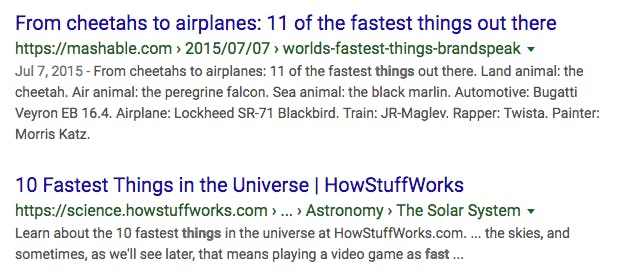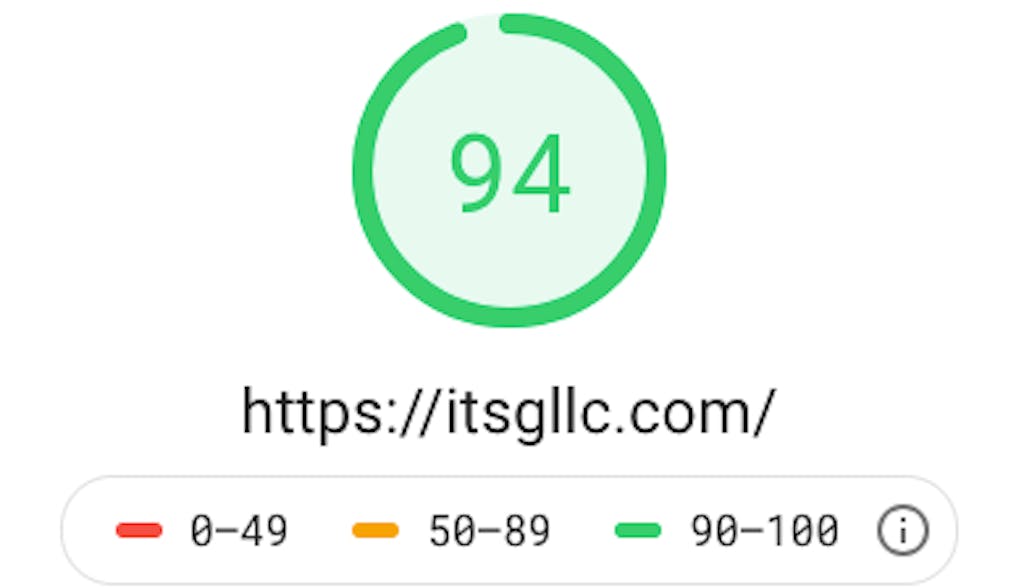Over the years we’ve been conditioned to expect fast websites, and sites are constantly striving to outspeed the competition because of it. In every scenario, slower sites lose out. Their page abandonment rate increases while their conversion rate, time on site, and pages visited per session all decrease. And although the SEO community likes to preach that “content is king,” the truth of the matter is that a slow site can completely nullify the benefits of great content. It won’t matter if you rank #1 for your search terms if everyone abandons your website before converting due to slow load speeds.
Speed as a Website Ranking Factor

Speaking of rankings, one of the reasons site speed is so important is because Google says it is. According to Google, site and page speed are, albeit small, ranking factors. And when Google says something is important and a ranking factor, that means we should all pay a bit more attention to it.
However, because page speed is only a small ranking factor, it may not necessarily be worth optimizing for in every instance. The ranking benefit may simply not be worth the additional cost of optimization if your site operates within a less competitive niche. But there are many niches in which every little ranking benefit is worth it, such as for lawyers — one of the most competitive niches around.
There is another reason to care about site speed, though. Even if your site doesn’t operate within one of the ultra-competitive spaces, site speed still affects other aspects of your site not directly associated with rankings: bounce rate and conversions.
Bounce Rate and Conversions
Bounce rate is another ranking factor along with site speed. So although site speed itself is a minor ranking factor, it affects another ranking factor. When speaking about websites, a bounce is any time someone enters your page and then leaves from that same page without further interaction (i.e. clicking onto another page, filling out a form, etc.). When someone bounces off your page, it sends a signal to Google’s algorithm which says the person didn’t like your site for some reason. That reason could be that your site loads slowly, the content on your page didn’t answer their question, or maybe your site is just ugly.

Regardless of why a visitor bounces from your site, the result is the same — a lost visitor and a negative signal sent to Google. So you don’t want to be increasing your bounce rate simply by having a slow website. And to illustrate just how big of an impact speed can have, 40% of visitors will abandon your site after 3 seconds of loading. That means they bounced before all of your content even appeared on screen.
Additionally, with every second of load time, your conversion rate decreases. So even if visitors are suffering through your slow site, they won’t be converting very often compared to the same site with higher speeds. And if visitors aren’t converting, what’s the point? The reason for this could be that they become frustrated with the loading, your page times out, or they associate the slow speed of your site with the quality of your product.
How to Speed Up a Website
With the importance of site speed in mind, you might now be wondering exactly how your site can be sped up. There are many ways to increase site speed, including minifying code, compressing and lazy loading images, using a content delivery network (CDN), or creating Accelerated Mobile Pages (AMP) just to name a few.
Minifying code and compressing images simply reduce file sizes, which in turn reduces load time. Lazy loading images is when an image below the fold of a page doesn’t load until it’s scrolled down to. This doesn’t reduce the overall size of the page or the files on it, but it does spread out the loading so the entire page doesn’t have to load at once. The less a page has to load initially, the faster it will be. CDNs are another way to lower load times by having images served from an external source. This further prevents the loading of images from slowing down your site.

Here at Media Proper we regularly minify code, compress and lazy load images, and use a CDN to serve image and video content. The combination of these efforts allows us to build sites with page speed scores between 90 – 100 on Google’s PageSpeed Insights.
Google also openly says it indexes mobile versions of sites first. So it’s not only important to have a fast desktop site, but a fast mobile site as well. And that’s where AMP comes in.
Accelerated Mobile Pages (AMP)

AMP, which used to be an acronym for Accelerated Mobile Pages, but is now the actual name of the “product,” is a website framework developed by Google in association with Twitter and various other large internet companies. The purpose of AMP is to serve web pages faster on mobile devices by utilizing extremely stripped-down versions of the pages. These AMP pages (syntax checks out) remove most of the “unnecessary” parts of a web page to increase speed, such as design elements and forms. When browsing on a mobile device, you can tell a page is in AMP format if it has a lightning bolt symbol.
So, should you use AMP for your website? That’s the big question. It’s made by Google, and we know that when Google says we should pay attention to something it’s important. But does that apply to AMP?
Not really.
AMP can be a good idea for certain sites, but for most sites, it either doesn’t really matter, or it can actually have a negative impact. One of the benefits of AMP sites is that they’re actually served from Google’s own servers, not yours. Google pre-loads them before they’re even clicked on in the search engine results page (SERP). However, this also means you’re relying on Google to deliver your website to mobile users — something to be wary of. Additionally, because AMP serves stripped-down versions of a page, they can’t really convert visitors.
The only sites for which AMP is worth using, for now, are large publications. If your site has a lot of articles, and those articles are the main feature of your site (i.e. how you make money), then AMP is probably worth it. But for just about everyone else, AMP doesn’t have many real benefits yet.
Conclusion
Speed is a ranking factor on Google, but that’s not the main reason why your website should load quickly. What’s more important is how both bounce rate and conversions are affected by speed. The slower your site, the higher your bounce rate and lower your conversion rate will be. But, all hope is not lost — there are a number of ways for you to speed up your site. These include minifying code, compressing and lazy loading images, using a content delivery network, and even perhaps using AMP pages.
Media Proper Web Development
Are you concerned about the speed of your website? Media Proper can help with that. Contact us today to learn more about our process and how we can design and develop a new site that will outperform your current one.

